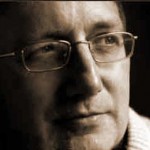From the Sydney Morning Herald
Truth or fiction? This lighthearted book shows you how to spot the difference.
Author: Andy Shea and Steve Van Aperen
Publisher: ABC Books
Lord Carlile, Britain’s independent reviewer of terrorism laws, said last month that lack of public trust in the intelligence and security services over the terrorist threat was directly related to the way the Blair Government advocated war in Iraq.
“The trust issue,” he said, “has been very damaged by the intelligence information connected with the Iraq war which is perceived, rightly or wrongly, to be inaccurate.” Thus Carlile touched on a fundamental issue of our age: the public has an uncanny knack of fingering a liar, no matter how much spin is deployed to cover uncomfortable facts.
Andy Shea and Steve Van Aperen are experts in distinguishing truth from fiction. Shea is a former London police officer and Van Aperen is an FBI-trained polygraph examiner. Their book provides a light-hearted examination of the trade and provides skills to determine whether a loved one, politician or journalist is lying. The authors ask readers to acknowledge that we all lie at various points in life, but only some lies are truly damaging. Context is everything.
Research at Queen Margaret University College in Edinburgh has found that women are better liars than men, principally because women are more fluent speakers and more confident in getting a message across. I wonder what would happen if more female politicians rose to power in Western nations. Aside from a necessary balancing in the daily running of affairs, would women lie even more effectively than their male colleagues?
In Britain, there are moves to ensure politicians promise to never lie while in office. The chairman of the Committee on Standards in Public Life, Sir Alistair Graham, says that the public demands politicians “tell it as it is and own up to mistakes”. Taking a country to war on a lie would, I hope, classify as a “mistake”.
The book reminds us that “deceit … is not solely a wicked human character trait”. Rather, it is part of our “natural instincts” and is utilised by many other creatures. For humans, however, lying is often simply a way of getting ahead.
In a study conducted in Britain in 2001, for example, 29 per cent of people admitted to misleading their current employer when they applied for the job.
The Centre for Policy Studies in Britain released a study last month that alleged the Prime Minister, Tony Blair, had manipulated the threat of terrorism for political ends. “Few people now believe what the Prime Minister, the security services and police tell us about security matters,” it concluded.
Just one month earlier, documents emerged that revealed a hidden strategy by the Blair Government to suppress debate about the country’s involvement in the “extraordinary rendition” prisoner transfer program. Undoubtedly Shea and Van Aperen would conclude that such spin is eroding the public’s faith in government and leading to a dangerous crisis of confidence.
So how do you spot a liar? Confusion between tenses when recalling a story is a telltale sign. “Once you hear somebody using past and present tenses within the same statement,” the authors write, “you know you’re stepping onto pretty thin ice when it comes to telling the truth.”
Paying attention to a person’s non-verbal behaviour is also a key. Van Aperen recently told a national newspaper that it is easier for a person to confess to a crime if they can justify it to themselves. “In 14 years with the police,” he said, “I saw all methods of interrogation and I can tell you the most effective method of interviewing is not blaming the person for their behaviour.”
Hitler famously said “the great masses of the people will more easily fall victims to a big lie than to a small one”. The man certainly knew about persuasion.
This book provides a timely insight into our “relaxed and comfortable” age. George Orwell would have been appalled.
